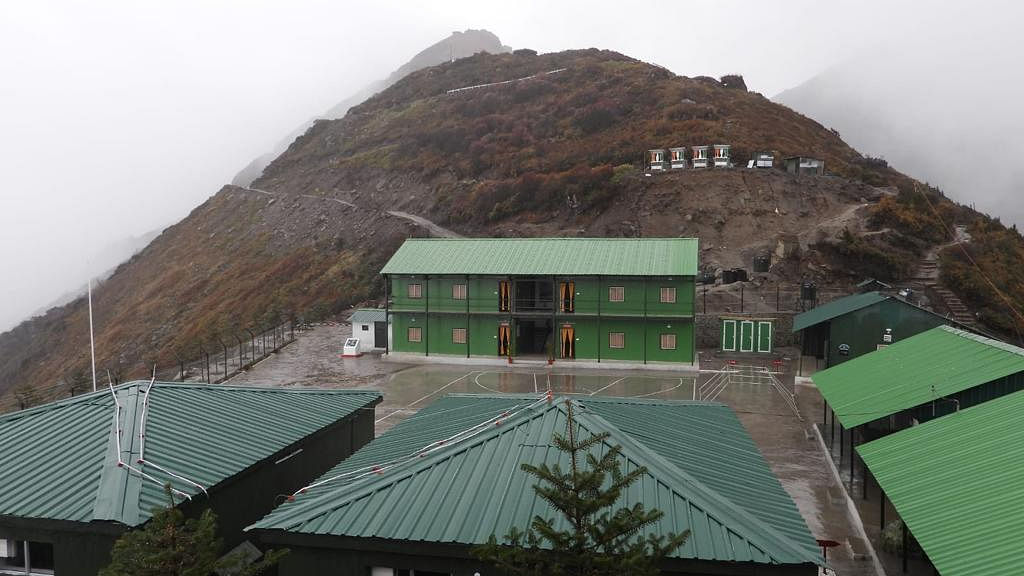
From ultra high performance concrete to bamboo reinforced concrete frames, army engineers have used many ingenious ways to construct model posts for the Indian army troops posted in the high altitudes guarding the border with China in Arunachal Pradesh.
Many such locations remain cut-off during the winter due to heavy snowfall. The "first of its kind" posts will replace the present prefabricated shelters or living bunkers constructed by the army engineers.
One such integrated post, which was taken up as a pilot project in November 2021 in Western Arunachal Pradesh (Tawang sector), is ready and two more would be completed by December, army officials told DH on Sunday.
The model post, with capacity to house at least 30 personnel, has incorporated better facilities with regard to space, essential troop comfort, weather protection, amenities like running water, renewable energy (solar power), safety and connectivity.
"The plan was to create a model post for troops on the front line as an integrated project. The troops thus far have been billeted in prefabricated shelters or living bunkers prepared by the Indian Army Engineers. There were major shortcomings with respect to living standards, protection against weather, space available to men, hygiene facilities and the ad-hoc power arrangements," said a statement issued by the army.
"This model post was the pilot project and there are plans to further evolve this design and concept and replicate it all along the frontline at many places across all regions. There will be many tangible and intangible benefits of such infrastructure, the most important amongst which would be seen in even higher troop morale and self-esteem especially when the Chinese have been constructing modern military infrastructure at a rapid pace all along our Northern borders," said the army statement.
Construction challenges
Construction of the model post in the high altitude locations, however, faced many challenges, particularly in transportation of construction materials, limited construction period due to continued bad weather and visibility conditions. "These challenges required a fresh look on construction technology," the army said.
"Construction of double storey Living shelter without a heavy crane by utilizing manual means of blocks and tackles by pulley was going back to the basics but an absolute necessity. Then there was the challenge posed by the continuous rainfall limiting the cement concrete construction at such high altitude. This challenge was obviated by utilizing admixtures like quick setting compound.The Indian Army has also started using home-grown technologies such as the Ultra High-Performance Concrete (UHPC). The
UHPC plates of any size can be casted in-situ or precast. The use of UHPC reduces the overall construction time and enhances portability and provides enhanced protection," the army said.
The army workers have also used bamcrete--the bamboo reinforced concrete frames, which are suitable for creating infrastructure in operational areas. "It can also be effectively used for rapid infrastructure development, especially in North Eastern states due to low cost and easy availability in huge quantities and integral properties of higher strength and corrosion resistance," the army said.